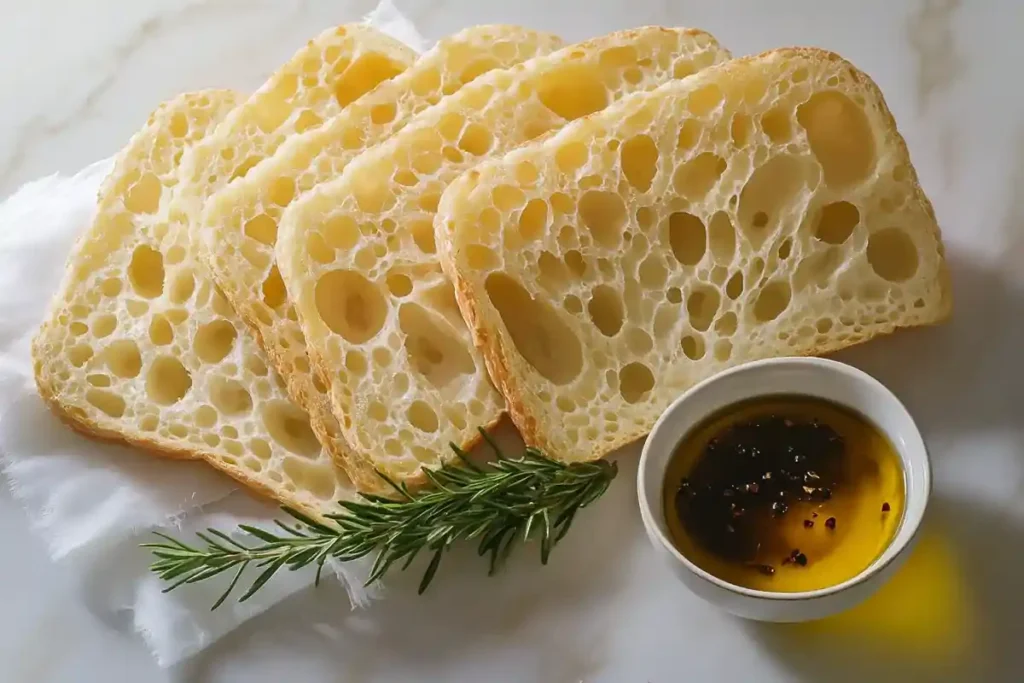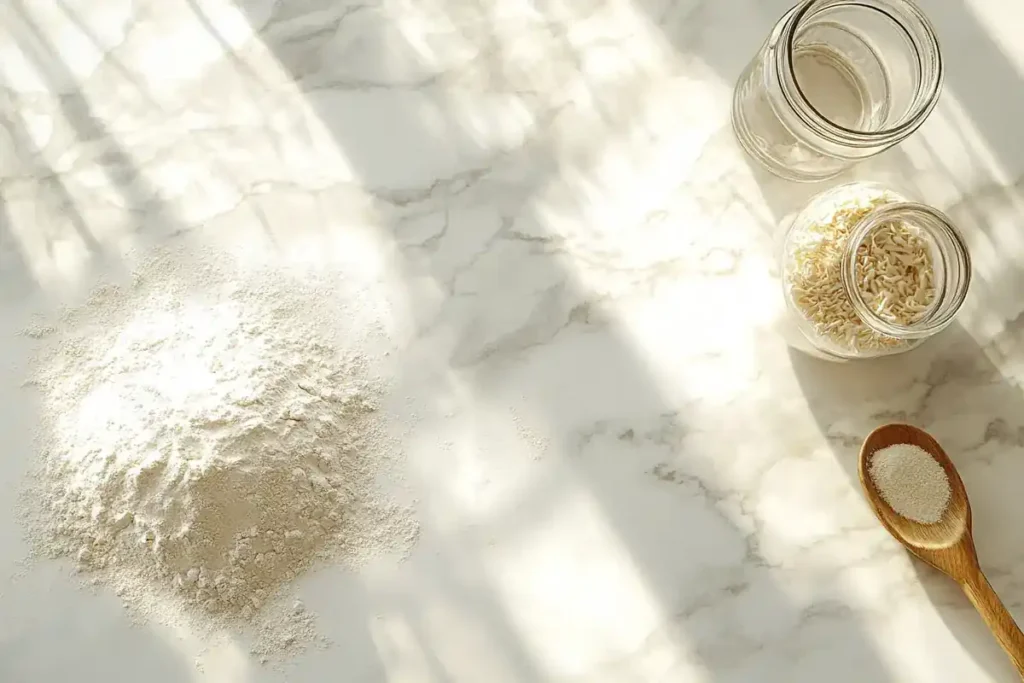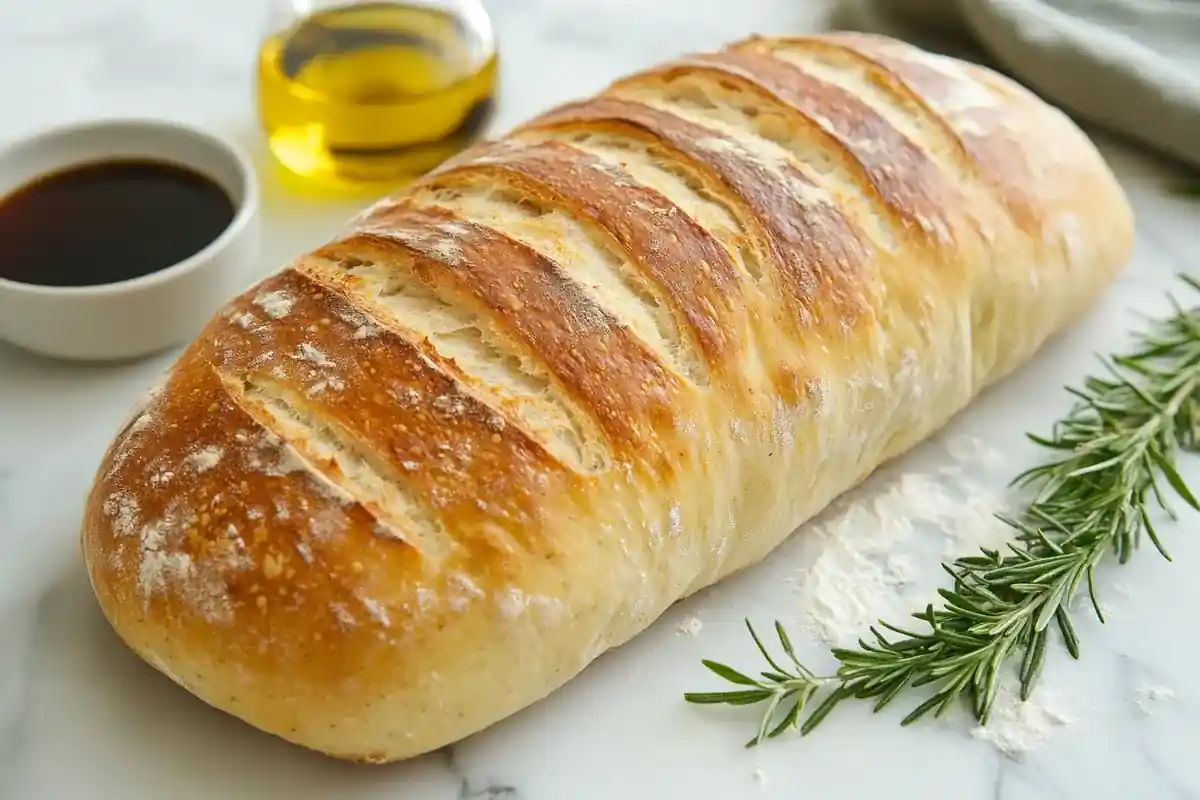introdution
Few things rival the satisfaction of biting into freshly baked artisan Italian bread. With its golden crust, airy crumb, and rustic charm, this bread is the epitome of simplicity and craftsmanship. But what exactly makes bread “artisan,” and why is Italian bread so beloved?
In this article, we’ll uncover the secrets behind artisan Italian bread, exploring its origins, characteristics, and cultural significance. You’ll also find an easy-to-follow recipe, complete with tips to master this timeless classic. Whether you’re a seasoned baker or a curious foodie, this guide will answer all your questions and inspire you to bake your own loaf.
What Makes Bread “Artisan”?
The Meaning of Artisan Baking
The term “artisan” in bread-making refers to a traditional, hands-on approach that emphasizes quality over quantity. Unlike mass-produced loaves, artisan Italian bread is crafted in small batches, often using time-honored methods like slow fermentation. This process enhances flavor and texture, setting artisan bread apart from its factory-made counterparts.
Artisan baking also prioritizes simple, high-quality ingredients. You’ll typically find just four key components: flour, water, salt, and yeast. No artificial additives or preservatives are used, allowing the natural flavors to shine through.
Characteristics of Artisan Italian Bread
So, what makes artisan Italian bread truly unique? First, there’s the crust—a crispy, golden exterior that’s slightly chewy. Inside, the crumb is light and airy, with irregular holes that result from careful fermentation.
Another defining feature is its rustic appearance. Whether it’s a round loaf or an elongated baguette, artisan Italian bread exudes a homemade charm. The flavor is mild yet rich, often with subtle nutty or tangy undertones depending on the baking method.
With its emphasis on tradition and authenticity, artisan Italian bread continues to captivate bread lovers worldwide. It’s more than just food—it’s a celebration of craftsmanship and heritage.
Types of Artisan Italian Bread
Popular Varieties
Italy boasts a rich tradition of bread-making, offering a wide range of artisan Italian bread that varies by region. Some of the most popular varieties include:

- Ciabatta: Known for its airy crumb and chewy crust, ciabatta is perfect for sandwiches or as a side for soups. Its name means “slipper,” a nod to its flat, elongated shape.
- Focaccia: A flavorful flatbread often seasoned with olive oil, rosemary, and sea salt. It’s versatile and can be served plain or topped with vegetables and herbs.
- Pane Toscano: This unsalted bread hails from Tuscany and pairs wonderfully with cured meats and cheeses. Its mild flavor makes it ideal for complementing robust dishes.
- Grissini: Thin, crispy breadsticks originating in Turin, perfect as a snack or appetizer.
- Pane di Altamura: A durum wheat bread with a distinctive yellow crumb and thick crust, native to the Puglia region.
Each variety reflects Italy’s diverse culinary heritage, showcasing the adaptability of simple ingredients like flour, water, salt, and yeast.
Key Features of Each Type
What sets these breads apart is the method of preparation and the regional ingredients used:
- Flour and Hydration: Ciabatta requires a high hydration dough for its airy crumb, while pane di Altamura relies on durum wheat for its dense texture.
- Shaping and Baking: Grissini’s slim shape ensures crispness, whereas focaccia’s dimpled surface holds olive oil and seasonings perfectly.
- Pairings: Artisan Italian breads aren’t just standalone—they’re integral to Italian meals. For instance, focaccia pairs well with soups, while pane Toscano complements rich stews.
For an in-depth look at focaccia recipes, check out this guide to making flavorful focaccia.
Recipe for Homemade Artisan Italian Bread
Ingredients List for Authentic Bread
To craft authentic artisan Italian bread at home, gather these ingredients:
- 3 ½ cups bread flour
- 1 ¼ cups warm water (110°F)
- 2 teaspoons salt
- 1 teaspoon sugar
- 1 teaspoon active dry yeast
Optional toppings: Olive oil, rosemary, sea salt.

Step-by-Step Instructions
- Activate the Yeast: Dissolve the sugar and yeast in warm water. Let it sit for 5–10 minutes until foamy.
- Mix the Dough: Combine the flour and salt in a large bowl. Slowly add the yeast mixture, stirring until a shaggy dough forms.
- Knead: Transfer the dough to a floured surface and knead for 8–10 minutes until smooth and elastic.
- First Rise: Place the dough in a greased bowl, cover with a damp cloth, and let it rise in a warm spot for 1–2 hours or until doubled in size.
- Shape the Loaf: Punch down the dough, then shape it into your desired form—whether a round boule or elongated loaf.
- Second Rise: Place the shaped dough on a parchment-lined baking sheet, cover, and let it rise for another 30–45 minutes.
- Bake: Preheat the oven to 450°F (230°C). For a crispy crust, place a pan of water on the oven’s bottom rack. Bake the bread for 25–30 minutes or until golden brown.
- Cool: Let the bread cool completely on a wire rack before slicing.
Nutritional Content (Per 100g)
| Nutrient | Content |
|---|---|
| Calories | 258 |
| Carbohydrates | 52g |
| Protein | 7g |
| Fat | 1.2g |
| Fiber | 2.3g |
| Sodium | 400mg |
This simple yet satisfying recipe captures the essence of artisan Italian bread, bringing the taste of Italy to your kitchen.
Artisan Italian Bread vs. White Bread
What Sets Artisan Italian Bread Apart?
At first glance, artisan Italian bread and white bread might seem similar, but their differences are significant. The most obvious distinction lies in their preparation methods. Artisan bread relies on traditional techniques, like slow fermentation and hand shaping, which enhance its flavor and texture. White bread, on the other hand, is typically mass-produced using rapid processes.
In terms of ingredients, Authentic Italian bread uses minimal, high-quality components like flour, water, salt, and yeast. Conversely, white bread often contains preservatives, emulsifiers, and added sugars to prolong shelf life and improve softness. This simplicity gives artisan bread a distinct, natural taste that white bread cannot replicate.
Flavor and Texture Comparisons
One bite of Authentic Italian bread reveals its signature chewy crust and airy crumb, while white bread offers a uniform, soft texture throughout. The complex flavor of artisan bread comes from slow fermentation, allowing natural sugars in the flour to develop over time. White bread, while soft and mildly sweet, lacks this depth of flavor due to its shorter preparation process.
Nutritionally, artisan Italian bread is often considered a better choice. Its minimal processing means fewer additives and a slightly higher fiber content compared to white bread.
For more on baking traditions, check out this recipe for homemade bread varieties.
FAQs About Artisan Italian Bread
What Does “Artisan Italian Bread” Mean?
The term “artisan” refers to bread that is handmade or produced in small batches using traditional methods. For artisan Italian bread, this means a focus on authentic techniques and simple ingredients that highlight the essence of Italian baking.
Is Artisan Italian Bread the Same as White Bread?
No, artisan Italian bread and white bread are different. While white bread is mass-produced with a focus on softness and long shelf life, artisan Italian bread is crafted with care, resulting in a crisp crust, rich flavor, and natural ingredients.
What Is the Difference Between Bread and Artisan Bread?
The primary difference lies in the process and quality. Artisan bread is made using time-honored methods, often involving slow fermentation, which enhances its taste and texture. Regular bread, especially store-bought, is mass-produced with a focus on uniformity and efficiency.
Is Italian Bread Healthier Than White Bread?
Generally, Italian bread is healthier because it contains fewer additives and preservatives. The fermentation process in artisan bread can also make it easier to digest and slightly more nutritious, offering a more wholesome option.
For more insights into the world of baking, explore our other bread recipes and tips.
Tips for Perfecting Artisan Italian Bread at Home
Tools and Techniques
To bake Authentic Italian bread like a pro, it’s essential to have the right tools and techniques. Here are some must-haves:
- Proofing Basket (Banneton): This helps shape the dough while creating beautiful ridges on the crust.
- Dutch Oven or Baking Stone: These retain heat evenly, giving your bread a crisp crust and soft interior.
- Kitchen Scale: Accuracy matters in baking, and a scale ensures consistent measurements.
- Lame or Sharp Knife: Used to score the dough, this tool prevents cracking and allows for even expansion during baking.
In terms of technique, mastering the art of fermentation and kneading is crucial. Fermentation develops flavor, while proper kneading ensures the dough has the right structure. Don’t rush the process; patience is the key to achieving that perfect balance of crust and crumb.
Common Mistakes to Avoid
Even with the best intentions, mistakes can happen. Here’s how to avoid common pitfalls when making Authentic Italian bread:
- Skipping Fermentation: Rushing through this step results in bland bread. Always allow enough time for the dough to rise.
- Over-Kneading: While kneading is essential, overdoing it can make the bread too dense. Stop when the dough is smooth and elastic.
- Ignoring Hydration Levels: The right balance of water is crucial. Too little leads to dry dough, while too much makes it unmanageable.
- Baking at the Wrong Temperature: Artisan bread needs high heat for the perfect crust. Preheat your oven to at least 450°F (230°C).

For more bread-making tips, explore Milk Bread: How to Make Soft, Fluffy Bread at Home.
Why Artisan Italian Bread Is Worth the Effort
Taste and Texture
One of the standout qualities of Authentic Italian bread is its taste. The slow fermentation process enhances natural sugars, resulting in a bread that is both subtly sweet and slightly tangy. Additionally, its crusty exterior contrasts beautifully with the soft, airy crumb inside, making each bite a delight.
Versatility in Meals
Artisan Italian bread isn’t just delicious on its own—it’s also incredibly versatile. You can pair it with soups, stews, or pasta dishes, use it for sandwiches, or even toast it for breakfast. Its ability to complement a wide range of meals makes it a staple in Italian households.
Whether you’re new to baking or a seasoned pro, artisan Italian bread offers a rewarding experience. Not only will you enjoy the process of crafting something by hand, but the final product will also be a testament to your skill and patience.
The Cultural Significance of Artisan Italian Bread
A Reflection of Italian Heritage
Authentic Italian bread is more than just food—it’s a symbol of tradition and community. In Italy, bread has always been central to daily life, often baked fresh in homes or small bakeries. Recipes are passed down through generations, preserving not only techniques but also a sense of connection to the past.
Each region of Italy has its own take on artisan bread, reflecting local ingredients and customs. For instance, the unsalted pane Toscano is a nod to Tuscany’s historical salt tax, while focaccia’s origins in Liguria highlight the region’s love for olive oil. These variations demonstrate how Authentic Italian bread serves as a culinary map of the country.
A Global Appreciation
Although deeply rooted in Italian culture, Authentic Italian bread has gained fans worldwide. Its versatility, unique texture, and authentic flavors have made it a favorite in kitchens across the globe. Restaurants often feature it as a starter with olive oil and balsamic vinegar, while home cooks use it for everything from sandwiches to bread puddings.
This growing appreciation highlights how food can transcend borders, bringing a taste of Italy to tables everywhere.
Final Thoughts
Why Artisan Italian Bread Stands Out
So, why does artisan Italian bread hold such universal appeal? The answer lies in its simplicity and authenticity. With just a few high-quality ingredients, it delivers complex flavors and a satisfying texture that mass-produced breads can’t match. Moreover, its versatility makes it a must-have for any meal.
Encouragement to Try Baking at Home
Baking your own Authentic Italian bread may seem intimidating at first, but the process is both rewarding and enjoyable. By following the recipe shared earlier and embracing the art of slow fermentation, you’ll be able to create a loaf that rivals those found in traditional Italian bakeries.
Don’t hesitate to experiment with different shapes, flavors, or toppings. Whether it’s a classic ciabatta or a rosemary-studded focaccia, your homemade bread will reflect your unique touch.
For more inspiration and tips, check out Artisan Italian Bread: A Comprehensive Guide to Mastering This Classic Loaf to explore creative bread ideas. With practice and patience, you’ll soon master the art of crafting artisan Italian bread.
Embrace the tradition, enjoy the process, and most importantly—savor every bite!

